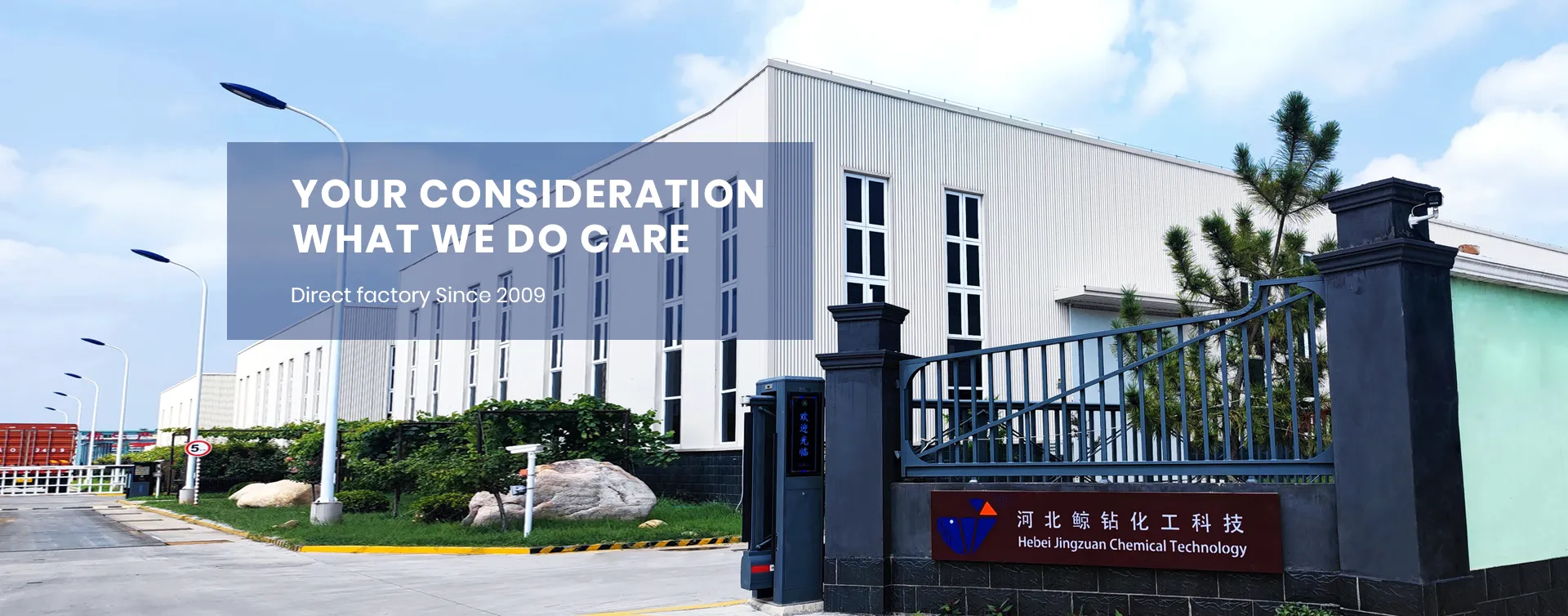
Nov . 07, 2024 09:24 Back to list
HPMC Safety Guidelines for Safe Handling and Usage in Various Applications
Ensuring Safety in the Use of HPMC A Comprehensive Overview
Hydroxypropyl Methylcellulose (HPMC) is a versatile and widely used cellulose ether that has found applications in various industries, including pharmaceuticals, food, cosmetics, and construction. Known for its thickening, binding, and film-forming properties, HPMC plays a critical role in enhancing product quality and functionality. However, with its extensive usage, ensuring the safety of HPMC is paramount.
Understanding HPMC
HPMC is a derivative of cellulose, which is a natural polymer obtained from plant sources. The modification process involves the substitution of hydroxyl groups with hydroxypropyl and methoxy groups. This alteration enhances the solubility and functionality of cellulose, making it an ideal candidate for a variety of applications. Though it is non-toxic and considered safe for human use, an in-depth understanding of its safety profile is essential for both manufacturers and consumers.
Safety in Pharmaceuticals
In the pharmaceutical industry, HPMC is extensively utilized in the formulation of various dosage forms, including tablets, capsules, and controlled-release systems. Its safety in this domain is well-documented, with extensive clinical studies supporting its non-toxic nature when used in appropriate concentrations. Regulatory bodies such as the U.S. Food and Drug Administration (FDA) have recognized HPMC as Generally Recognized As Safe (GRAS), and it is compliant with standards set by the European Medicines Agency (EMA).
However, precautions must be taken to ensure that HPMC is sourced from reputable manufacturers who comply with good manufacturing practices (GMP). Contaminants during production or from raw materials can pose risks to consumers. Therefore, quality control and regular testing of HPMC products are vital to maintain safety.
Implications for Food Applications
In the food industry, HPMC serves as a food additive, primarily as a thickener and stabilizer. The safety profile of HPMC, when utilized in foods, is generally favorable. Comprehensive toxicological studies have indicated minimal adverse effects, even at higher levels of consumption. The Joint FAO/WHO Expert Committee on Food Additives (JECFA) has evaluated HPMC and established an acceptable daily intake (ADI), ensuring that consumers can safely enjoy products containing this additive.
hpmc safety

Nevertheless, individuals with specific allergies or sensitivities should remain vigilant. While HPMC is derived from natural cellulose sources, the manufacturing process may involve chemicals that could elicit allergic reactions in sensitive individuals. Hence, labeling transparency and awareness are crucial in mitigating potential risks.
Addressing Safety in Cosmetics
In the cosmetic industry, HPMC enhances product texture, stability, and application properties. The safety of HPMC in cosmetics has also been affirmed, with numerous studies indicating its benign nature when applied topically. It is widely used in various formulations, including creams, lotions, and shampoos.
However, the potential for skin irritation or sensitization exists, particularly in certain formulations or among individuals with sensitive skin. It is essential for cosmetic manufacturers to conduct thorough safety assessments and consumer testing to identify any adverse reactions. Educating consumers on proper usage and potential reactions is also an important step in promoting safety.
Environmental Considerations
Beyond human health, the environmental safety of HPMC is a growing concern. The biodegradability of cellulose derivatives like HPMC is generally favorable, but the production process itself must also be controlled to minimize ecological impact. Sustainable sourcing and environmentally responsible production practices are critical to ensuring that the benefits of HPMC do not come at the expense of the environment.
Conclusion
While Hydroxypropyl Methylcellulose is recognized as a safe and effective additive across various industries, understanding its safety implications is crucial. Continuous vigilance in sourcing, manufacturing practices, and consumer education is necessary to uphold safety standards. By promoting transparency and enforcing regulatory guidelines, we can leverage the benefits of HPMC while safeguarding public health and the environment. Safety, after all, is a shared responsibility that spans manufacturers, regulators, and consumers alike.
-
Versatile Hpmc Uses in Different Industries
NewsJun.19,2025
-
Redispersible Powder's Role in Enhancing Durability of Construction Products
NewsJun.19,2025
-
Hydroxyethyl Cellulose Applications Driving Green Industrial Processes
NewsJun.19,2025
-
Exploring Different Redispersible Polymer Powder
NewsJun.19,2025
-
Choosing the Right Mortar Bonding Agent
NewsJun.19,2025
-
Applications and Significance of China Hpmc in Modern Industries
NewsJun.19,2025







